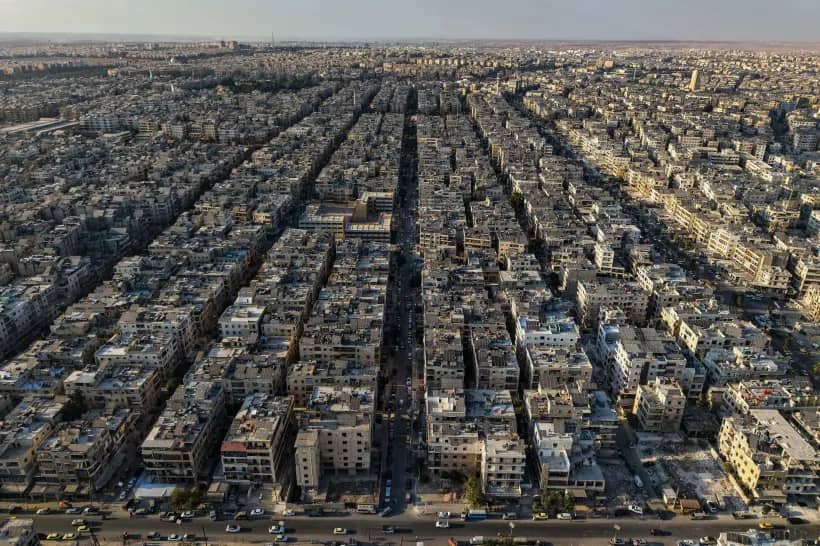PRESCOTT, Arizona — More than eight decades after a sacred baptismal font mysteriously disappeared from a historic Catholic church in Caborca, Mexico, two Prescott men were successful in their years-long mission to return the vessel to its rightful home.
Along the way, the two men relied on a combination of friendship, diplomacy and persistence to navigate nearly 15 years of ups and downs in international negotiations, The Daily Courier reported.
Prescott residents Robert Greninger and Ed Williams — both long-time members of the Prescott-Caborca Sister City organization — were honored recently in Caborca, Sonora, Mexico, for the crucial role they played in restoring the original baptismal font and its associated vessels to Caborca’s signature church, the Our Lady of Immaculate Conception.
Greninger, who has been involved with the Prescott Sister City organization since 1999 and has served as its president, remembers the day in 2008 when he was touring the Our Lady of Immaculate Conception Church with Gloria Elena Santini, a leader of Caborca’s efforts to restore the 1809-era church in time for its 200th anniversary.
“We came to the baptismal room, and I asked, ‘what happened to the font (a receptacle that holds baptismal water)?’” Greninger recalled after returning from his latest visit to Caborca.
He was told that the font had been taken from the church in 1937 by a young Arizona student. No one knows for sure why the woman took the font, Greninger said, but one theory is that she feared for the safety of the font in the era of anti-clerical sentiments during the 1930s reformation of the Catholic Church in Mexico.
Regardless of the reason, the font would remain in Arizona for the next 84 years — first in a private home collection, and later in the Arizona Historical Society’s Tucson museum as the property of the State of Arizona.
Although the Tucson museum had offered to temporarily lend the sacred artifact to the Caborca church, Greninger said the Caborcans were interested only in having the font returned permanently to its rightful home.
That finally happened on April 4, when the font was officially signed over to the Caborca church. An agreement had been reached in August 2021 between the Mexican Consulate in Tucson, the Arizona Historical Society, the Historic Temple Board, ecclesiastical authorities, and members of the two Sister City organization. The baptismal font was then returned to Mexico, after which it spent several months at the National Anthropologic Museum in Mexico City.
In early April, Greninger and Williams, along with several other Prescott members of the Prescott-Caborca Sister City Organization, traveled to Caborca for official signing over of the font.
In celebration of the return of the font to the historic mission church, the two men were awarded ceremonial keys to the town of Caborca and were celebrated for their long efforts in getting the font back.
“To a person, (the people of Caborca) said ‘this wouldn’t have happened without your assistance,’” Greninger said.
Back in 2008, he had made a promise to get the font back to Caborca, and he said its return to a community that he has come to think of as family was especially gratifying.
“Sister Cities is about bringing people together one community at a time,” Greninger said of the U.S. organization that was the inspiration of former U.S. President Dwight D. Eisenhower after he witnessed the carnage and devastation of the World War II and the Korean Conflict.
The Prescott-Caborca Sister City partnership was formed in 1972 and is currently celebrating its 50th year.
Greninger sees the type of person-to-person efforts that he and Williams engaged in as the embodiment of the Sister Cities goal. “What better way to do that than to do something important for the citizens of the community?” he said.
After Greninger took that tour of the Caborca church in 2008, he remembers thinking about the missing font through the night. When he met with Santini again the next day, he told her he would do what he could to bring the font back to Caborca.
Soon after that meeting, Greninger contacted Williams, a retired University of Arizona professor of political science, who had crucial connections on both sides of the border.
“I lived in Tucson for many years, and I had contacts in Mexico,” Williams said.
The collaboration between Williams and Greninger would lead to years of meetings with a broad range of state, federal, and museum officials, including representatives from Arizona Gov. Doug Ducey’s office.
“We spent the next frustrating 15 years begging, cajoling, and pleading with both U.S. and Mexican authorities to reach an agreement to return the font and vessels to the church in Caborca,” Greninger wrote in an account of the saga.
He and Williams say the return of the font became a passionate cause. “I often told people, ‘I won’t die until I get that font back,’” Greninger said.
Most of people they met with during the course of the negotiations were amenable to the idea of getting the font back to Caborca, Greninger and Williams said. “I don’t think we ever met with any resistance,” Williams said.
Still, things never seemed to progress to the point of an agreement, until Mexico’s First Lady Beatriz Gutierrez Muller became involved. Soon after that, Greninger and Williams said, there was an agreement.
Noting that the historic Our Lady of Immaculate Conception of Caborca Church has ties back to Father Eusebio Francisco Kino, a missionary of the late 1600s and early 1700s, Greninger said, “Padre Kino is smiling.”













